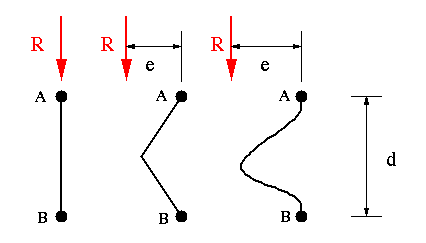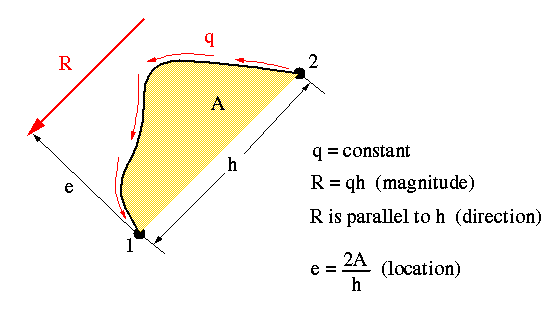
In this section our focus shifts to built-up beams (with open section) that are composed of thin web(s) supported by stiffeners (or stringers). In the analysis of such beams the following assumptions are made.
Assumptions:
1. Calculations of centroid, symmetry, moments of area and moments of inertia are
based totally on the areas and distribution of beam stiffeners.
2. A web does not change the shear flow between two adjacent stiffeners
and as such would be in the state of constant shear flow.
3. The stiffeners carry the entire bending-induced normal stresses, while the
web(s) carry the entire shear flow and corresponding shear stresses.
Analysis:
Let's begin with a simplest thin-walled stiffened beam. This means a beam with two stiffeners and a web. Such a beam can only support a transverse force that is parallel to a straight line drawn through the centroids of two stiffeners. Examples of such a beam are shown below. In these three beams, the value of shear flow would be equal although the webs have different shapes.

The reason the shear flows are equal is that the distance between two adjacent stiffeners is shown to be 'd' in all cases, and the applied force is shown to be equal to 'R' in all cases. The shear flow along the web can be determined by the following relationship

Important Features of Two-Stiffener, Single-Web Beams:

For multi-stiffener, multi-web beams the shear flow never changes direction in the web between the adjacent stiffeners. But it can change direction at a stiffener separating two adjacent webs.
 To Section
III.5
To Section
III.5
 To Index Page of
Transverse Shear Loading of Open Sections
To Index Page of
Transverse Shear Loading of Open Sections